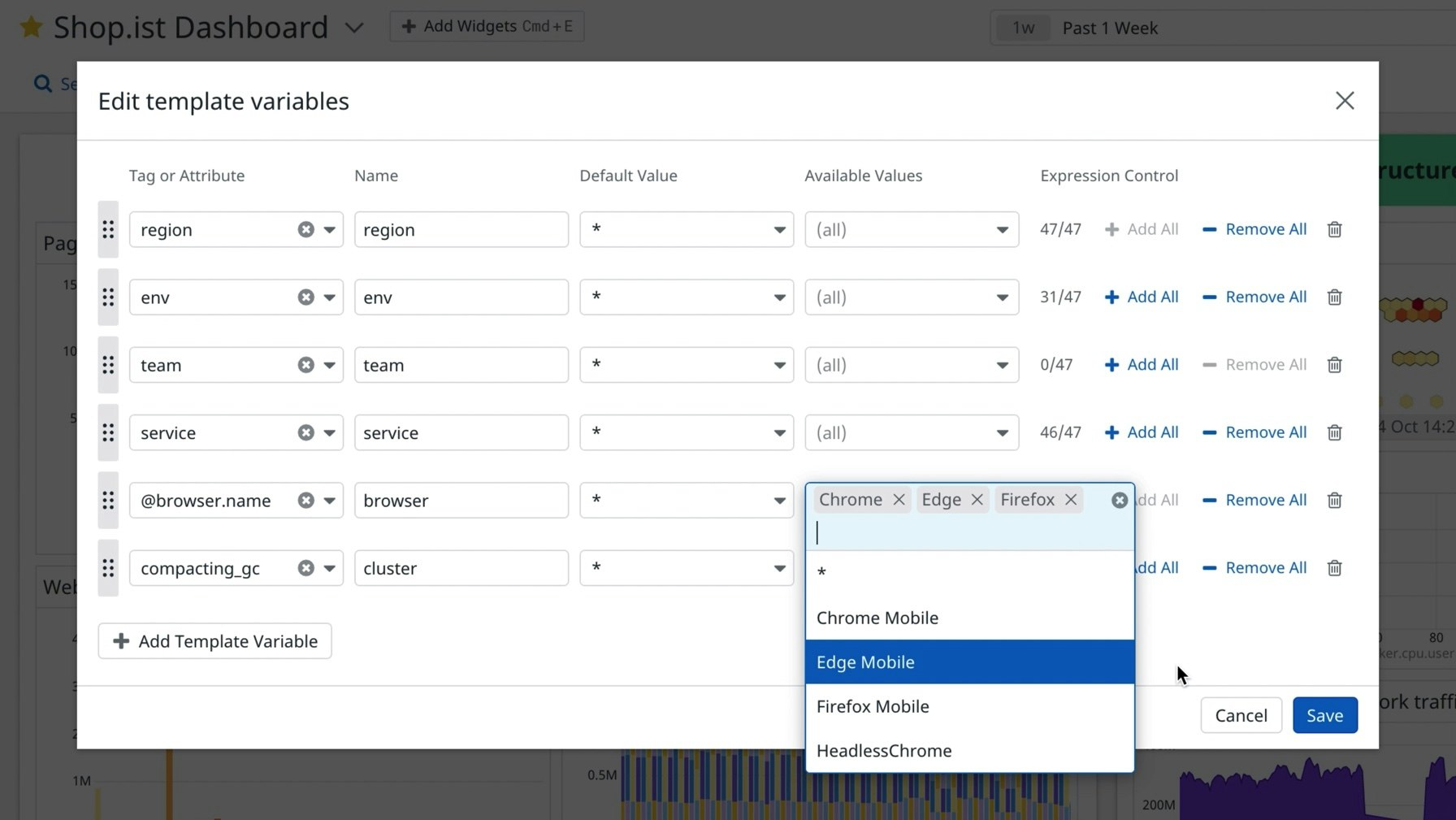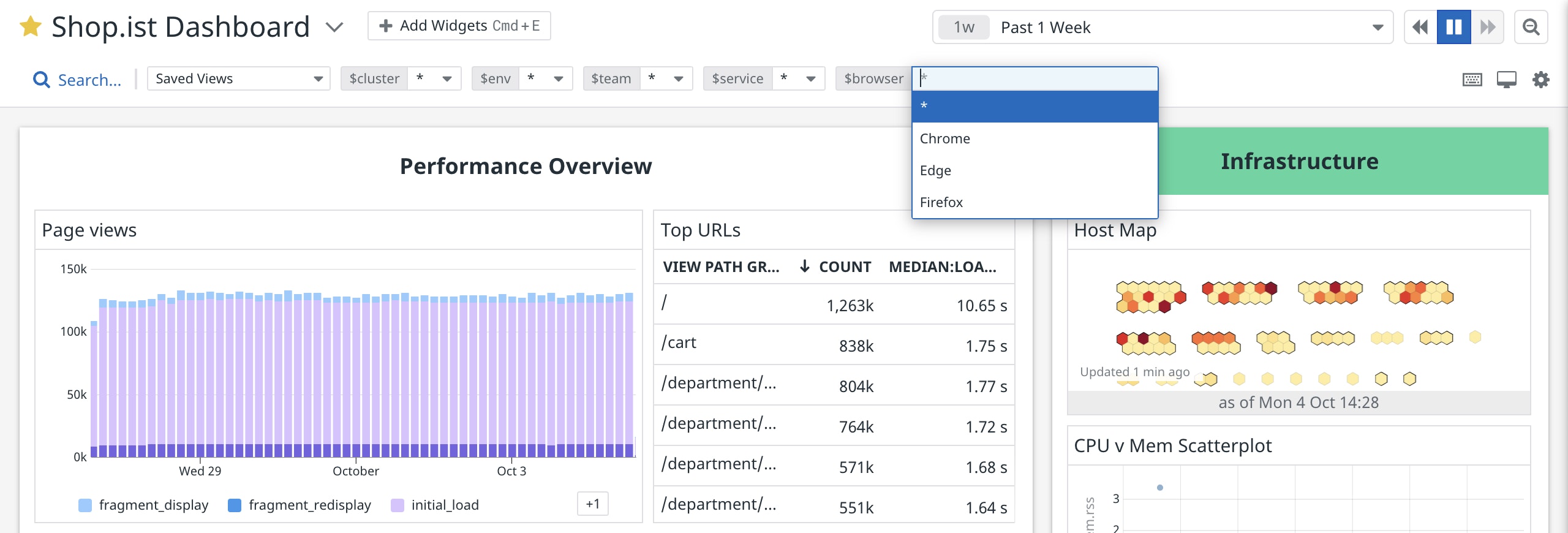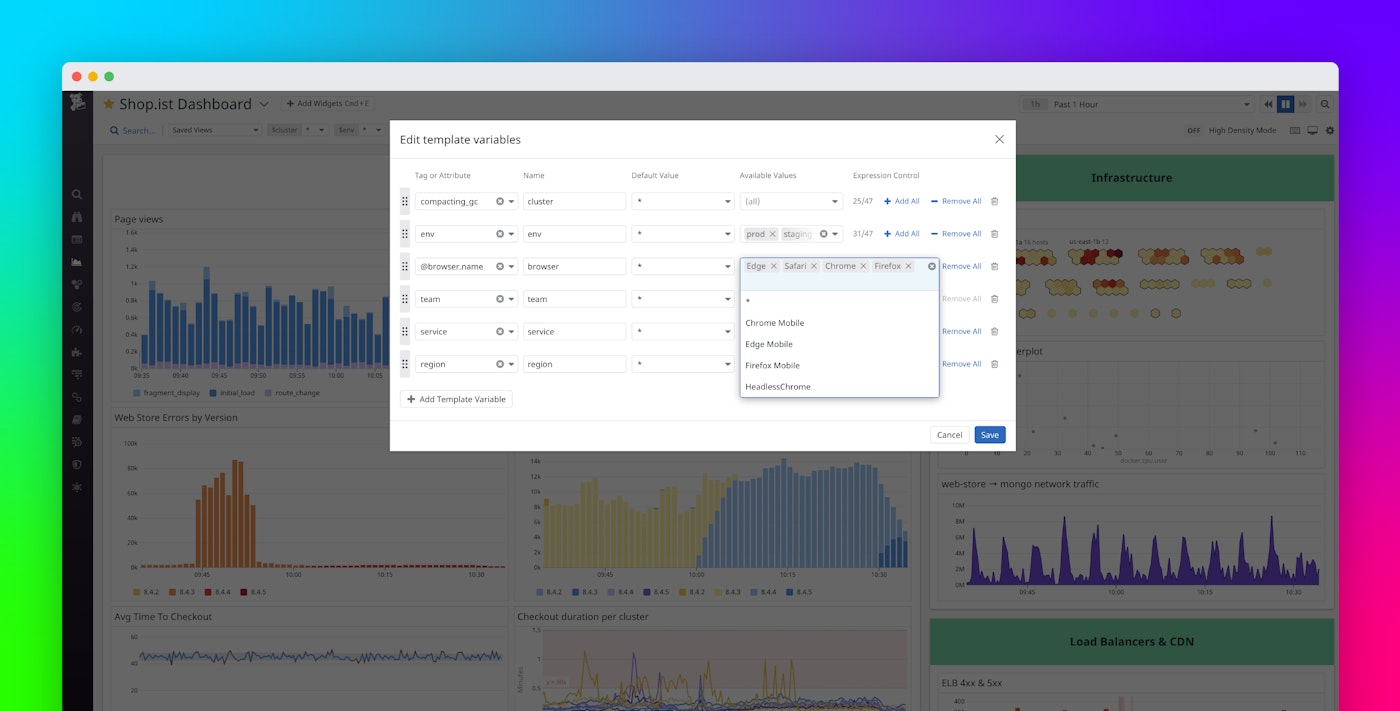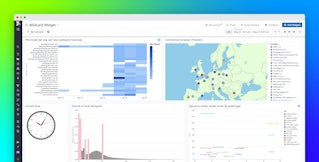
Stephanie Niu

Thomas Sobolik

Edwin Morris
Datadog’s template variables help you quickly scope your dashboards to specific contexts using tags, so you can visualize data from only the hosts, containers, services, or any other tagged objects you care about. This helps you build more flexible dashboards so you can access the insights you’re looking for as quickly as possible. We’re proud to announce new features for the template variable workflow that enable you to make highly dynamic, shareable dashboards more efficiently. In this post, we’ll look at the new template variable modal for creating and sorting variables, as well as a new available values field, which lets you select what values appear in the dropdown to make your dashboards easier to use.
Manage template variables faster with the new modal
The new template variable modal makes it easier to create and organize variables. When you create a new template variable, you can select the tag or attribute you want to use. Datadog automatically fills in the variable’s name using the tag key.
Setting default values ensures that your dashboard always loads with the same subset of data displayed, so you can easily share it in a default scope across your organization.
You can also drag variables in the modal to reorder them—this helps you group related variables together to make your variable set easier to parse, especially if you’re using a large number of variables.
Focus your dashboards to available values
In cases where your new template variable has a large number of possible values, it can be tedious to find the ones you need—often, there’s only a small subset that your team needs to view in the dashboard. And, in cases where your tag values are long strings that are difficult to remember—such as hostnames, container pods, or org IDs—querying for them specifically can be error-prone. This can make it difficult, for example, for stakeholders outside your team to effectively move through scopes in your dashboard.
To address this, you can now configure available values for each template variable. This means you can specify which values for a tag are available in the dropdown for a template variable in your dashboard.

This enables you to focus only on relevant values for your template variables and filter out noise, such as unsupported browsers, deprecated services, and data from older deployments that are no longer reaching customers.

Combining this with dynamic template variable syntax, you can configure your graphs to query the exact tag values you need from across your environment as quickly and efficiently as possible. And, with saved views, you can easily preserve the scope of your dashboard visualizations to share key information across teams.
Optimize your template variable workflow
With the new optimized template variable workflow, it’s easier than ever to use your dashboards to visualize and monitor the data you need. These new features are now generally available for all Datadog customers—for more information about working with template variables, see our documentation. Or, if you’re brand new to Datadog, get started with a 14-day free trial.





